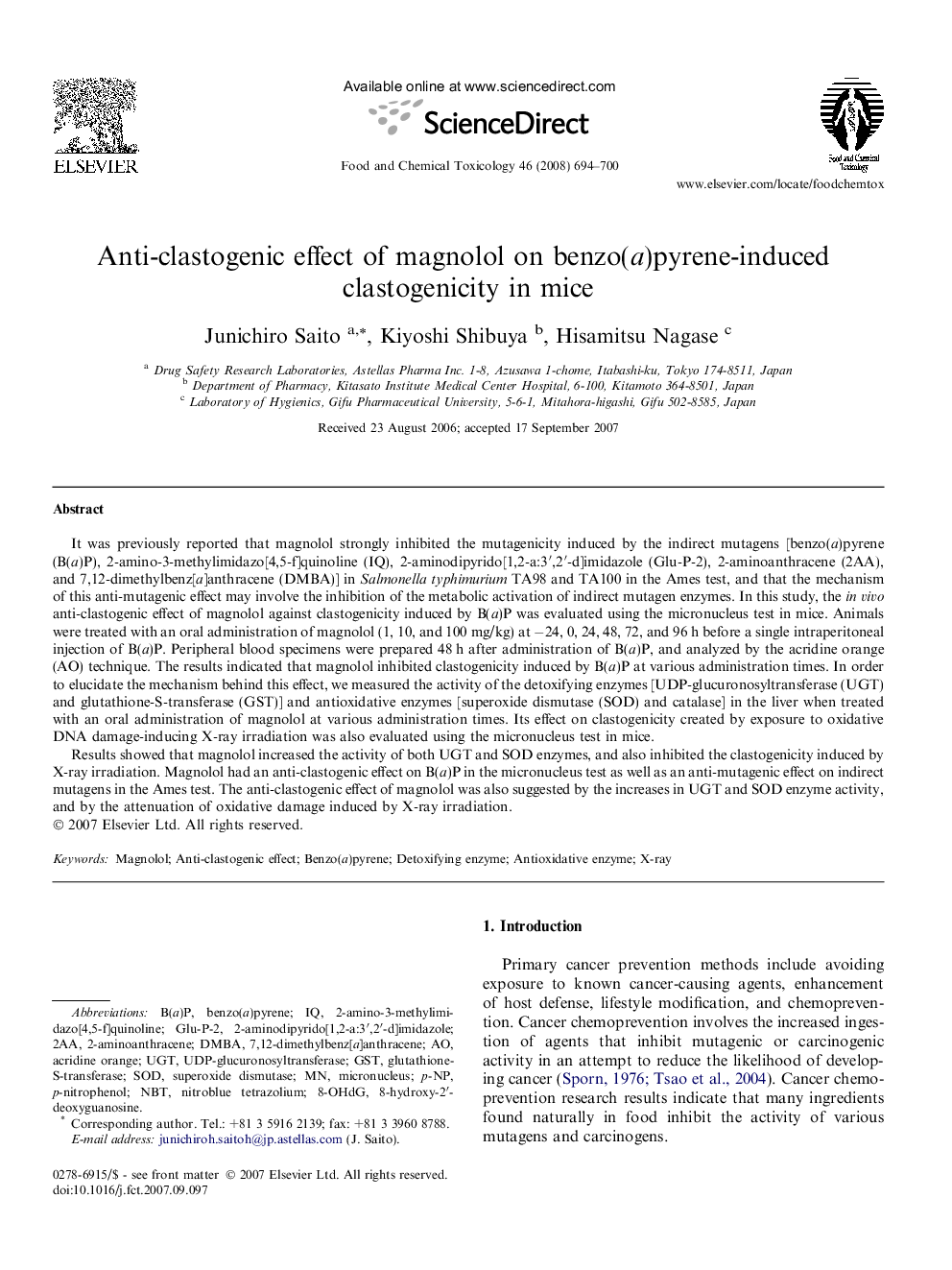| Article ID | Journal | Published Year | Pages | File Type |
|---|---|---|---|---|
| 2587117 | Food and Chemical Toxicology | 2008 | 7 Pages |
It was previously reported that magnolol strongly inhibited the mutagenicity induced by the indirect mutagens [benzo(a)pyrene (B(a)P), 2-amino-3-methylimidazo[4,5-f]quinoline (IQ), 2-aminodipyrido[1,2-a:3′,2′-d]imidazole (Glu-P-2), 2-aminoanthracene (2AA), and 7,12-dimethylbenz[a]anthracene (DMBA)] in Salmonella typhimurium TA98 and TA100 in the Ames test, and that the mechanism of this anti-mutagenic effect may involve the inhibition of the metabolic activation of indirect mutagen enzymes. In this study, the in vivo anti-clastogenic effect of magnolol against clastogenicity induced by B(a)P was evaluated using the micronucleus test in mice. Animals were treated with an oral administration of magnolol (1, 10, and 100 mg/kg) at −24, 0, 24, 48, 72, and 96 h before a single intraperitoneal injection of B(a)P. Peripheral blood specimens were prepared 48 h after administration of B(a)P, and analyzed by the acridine orange (AO) technique. The results indicated that magnolol inhibited clastogenicity induced by B(a)P at various administration times. In order to elucidate the mechanism behind this effect, we measured the activity of the detoxifying enzymes [UDP-glucuronosyltransferase (UGT) and glutathione-S-transferase (GST)] and antioxidative enzymes [superoxide dismutase (SOD) and catalase] in the liver when treated with an oral administration of magnolol at various administration times. Its effect on clastogenicity created by exposure to oxidative DNA damage-inducing X-ray irradiation was also evaluated using the micronucleus test in mice.Results showed that magnolol increased the activity of both UGT and SOD enzymes, and also inhibited the clastogenicity induced by X-ray irradiation. Magnolol had an anti-clastogenic effect on B(a)P in the micronucleus test as well as an anti-mutagenic effect on indirect mutagens in the Ames test. The anti-clastogenic effect of magnolol was also suggested by the increases in UGT and SOD enzyme activity, and by the attenuation of oxidative damage induced by X-ray irradiation.
